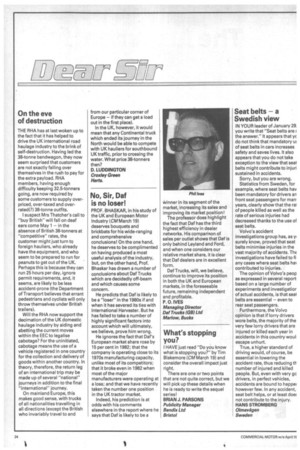Seat belts — a Swedish view
Page 26

If you've noticed an error in this article please click here to report it so we can fix it.
IN YOUR leader of January 29 you write that "Seat belts are the answer." It appears that y< do not think that mandatory LI: of seat belts in cars increases safety and saves lives. It also appears that you do not take exception to the view that seal belts might contribute to injur sustained in accidents.
Sorry, but you are wrong.
Statistics from Sweden, for example, where seat belts hay been mandatory for drivers an front seat passengers for man' years, clearly show that the rat of people killed as well as the rate of serious injuries had decreased thanks to the use of seat belts.
Volvo's accident investigations group has, as y' surely know, proved that seat belts minimise injuries in the vast majority of accidents. Th E investigations have failed to fi any cases where seat belts ha, contributed to injuries.
The opinion of Volvo's poop as expressed in several report based on a large number of experiments and investigatior of actual accidents, is that seal belts are essential — even to rear seat passengers.
Furthermore, the Volvo opinion is that if lorry drivers wore belts, the majority of the very few lorry drivers that are injured or killed each year in accidents in this country woui escape unhurt.
True, a higher standard of driving would, of course, be essential in lowering the accident rate, thus reducing tn number of injured and killed people. But, even with very gc drivers, in perfect vehicles, accidents are bound to happei however few. In any accident, seat belt helps, or at least doe: not contribute to the injury. HANS STROMBERG Oknevagen Sweden




















































































